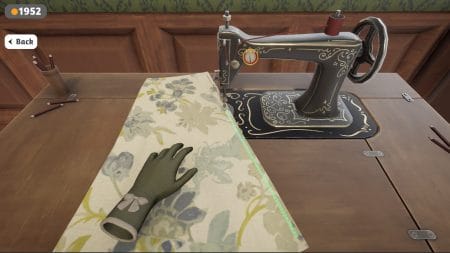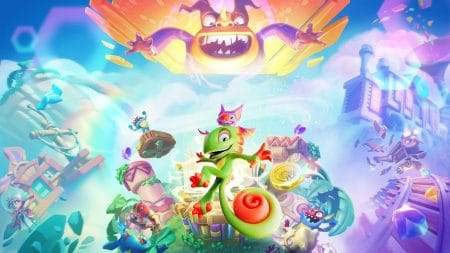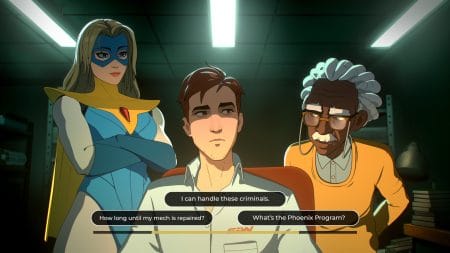A Familiar, Not-So-Familiar Ballad
Freedom is a luxury that few games truly offer. Whether due to technical constraints or design philosophy, many developers depend on linearity to provide focus and polish to their games. Songbringer, developed by Nathanael Weiss under the studio name Wizard Fu Games, aims to buck this trend.

Since its release in 1986, the original The Legend of Zelda has been heralded for its sprawling, secret-laden overworld and tight dungeon design. Few Zelda titles since have afforded the same level of freedom and wonder as The Legend of Zelda. Even the excellent Breath of the Wild cites the game as its number-one influence.
Announced back in 2015 via Kickstarter, Songbringer pledges to provide players the freedom of a 2D Zelda game with the variety and unpredictability of a roguelike. With the exciting premise of endless, procedurally generated The Legend of Zelda-quality experiences, Songbringer seems like a dream come true for fans of the action-adventure genre.
But does Songbringer truly deliver on its lofty promise? Or does it crumble under the weight of its admirable ambition?
Far From Home
Songbringer begins with an opener as simple as the game it emulates. Roq Epimetheos, a space explorer traveling aboard the Songbringer, crash lands on a mysterious planet. He’s been separated from the rest of his shipmates, with no weapons or tools. Armed with nothing but a nanosword found in a nearby cave and the companionship of his robot Jib, Roq sets out to explore the uncharted land and regroup with his crew.
From here, players navigate the overworld of their respective world (more on this later), uncovering its secrets and descending into various dungeons to find new items and increase their courage (aka health).
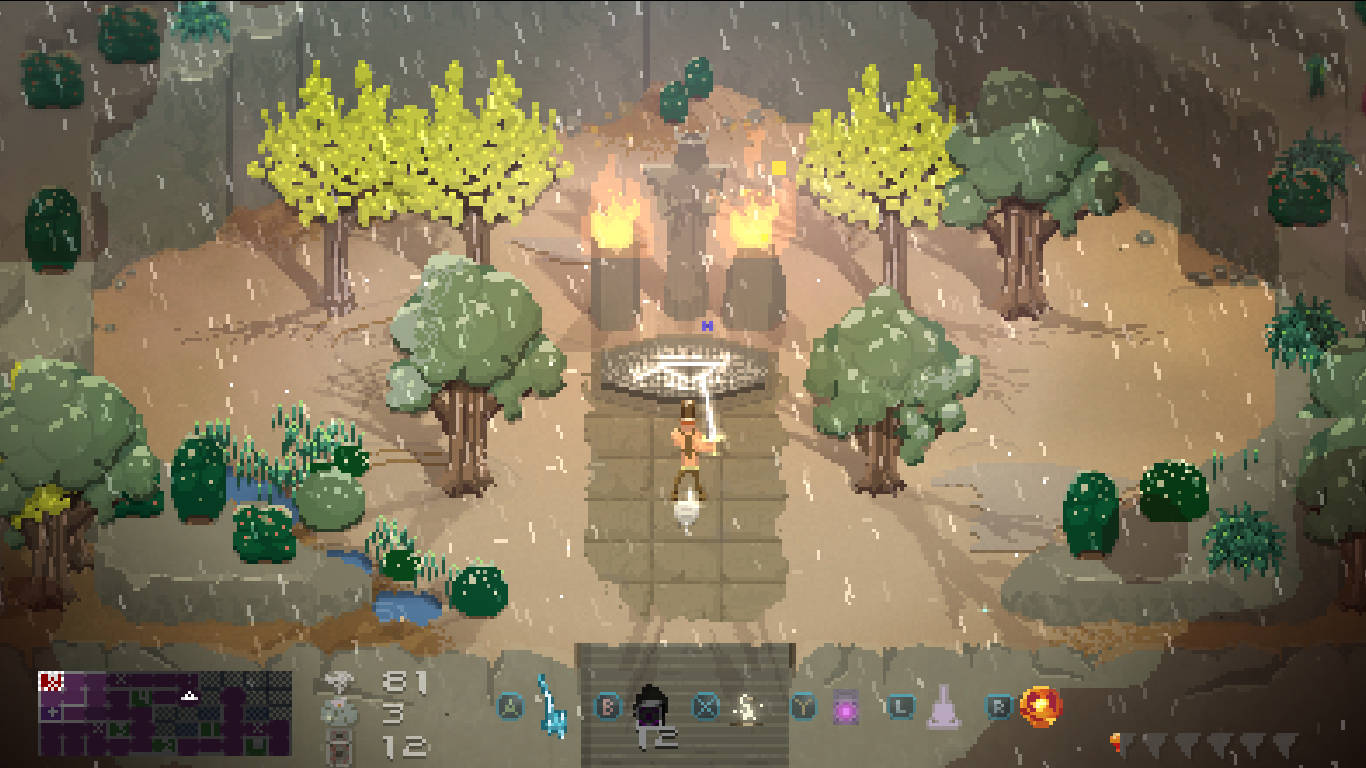
The setup is refreshingly simple. Conquer 8 dungeons of varying difficulty before tackling a final gauntlet of bosses. Buy items from shops scattered across the map with local currency. Find 4 heart pieces to gain an extra heart for the health bar.
Sound familiar? Everything about Songbringer screams The Legend of Zelda, and that’s a great thing. There’s a reason why the Zelda formula still works, years later, and Songbringer isn’t afraid to embrace this heritage.

While the story here is relatively barebones, it succeeds at helping to establish the world of Songbringer and its main characters. It also, like The Legend of Zelda before it, leaves plenty to the imagination, encouraging players to go out and discover the game’s secrets and lore for themselves.
Limitless Possibilities
The act of discovery in Songbringer is at the heart of its gameplay. While its actual mechanics have been seen before in numerous action-adventure games, Songbringer stands out thanks to its unique approach to world-building.
Players begin by entering a 6-letter (or less) “world seed,” as coined by developer Nathanael Weiss. Each world contains its own unique overworld, dungeon layouts, and combination of bosses. And with 26 to the power of 6 distinct possibilities (not accounting for seeds with 1-5 letters)… you can do the math.
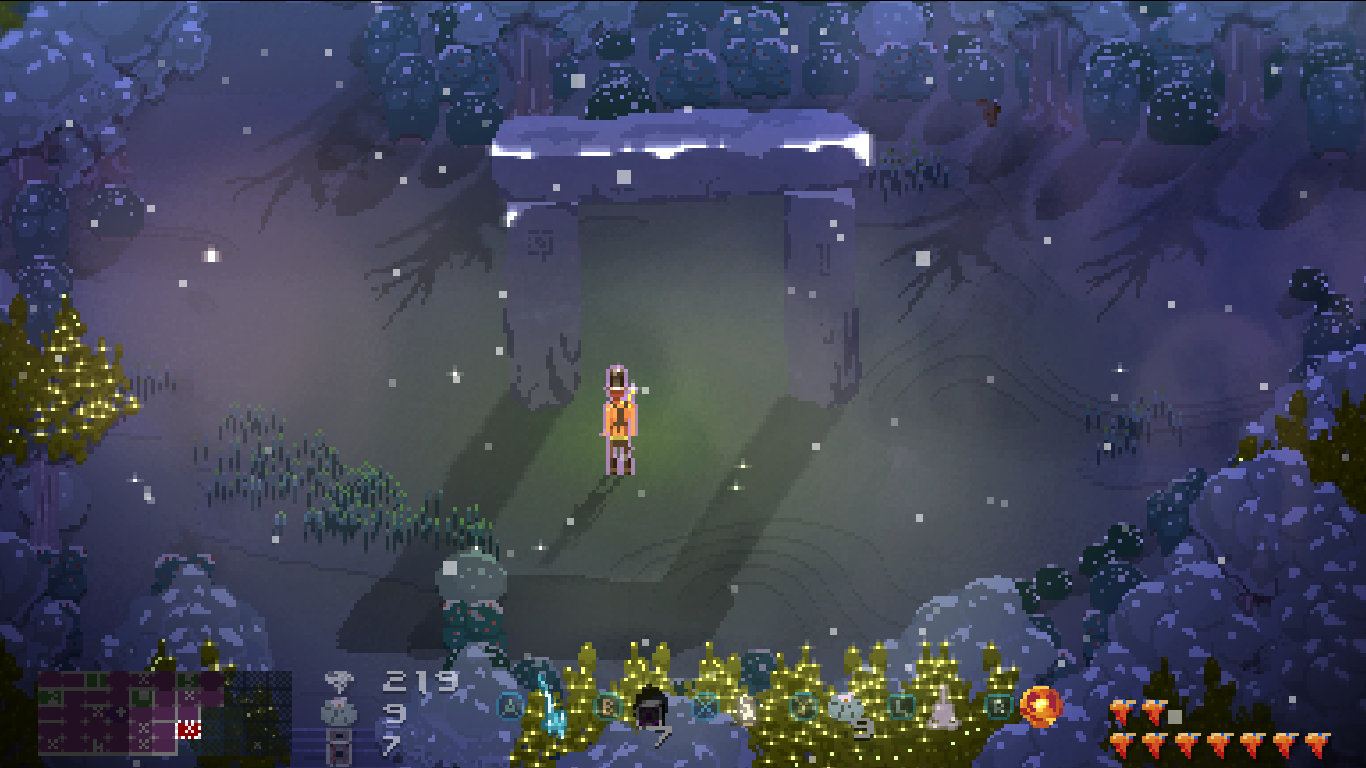
From the very moment players select ‘New Game,’ Songbringer’s roguelike DNA ensures that every new playthrough will be different. Better yet, gamestates are consistent for a given world seed. For example, I did a playthrough lasting just under 8 hours on the ‘David’ world seed (original, I know). If anyone else uses ‘David’ as their world seed, they will experience the exact same world as I did.
This opens up the possibilities for two unique styles of play. Players can go in blind to worlds, a la No Man’s Sky or Minecraft. Or, they can choose to play previously discovered worlds and share tactics with friends, or even perform speedruns. This flexibility is one of Songbringer’s biggest strengths, and one that I suspect will help to sustain it long after release.
Preparing for Battle
That being said, what use is having unlimited replayability if the base gameplay isn’t any good? After all, No Man’s Sky taught us to be wary of any game that boasts about its ‘size’ or ‘scope’.
Thankfully for us, Songbringer is fun to play. While the game lacks the precision of movement and control of a bonafide, polished-to-a-sheen Zelda title, what’s here gets the job done. Players assign various weapons and items they collect to different buttons on the keyboard/gamepad as they progress. A tap of the A-button may result in a swing of your sword, while the B-button drops a bomb on a timed fuse. Anyone who’s played a Zelda game in the past 30 years should feel right at home with the controls.
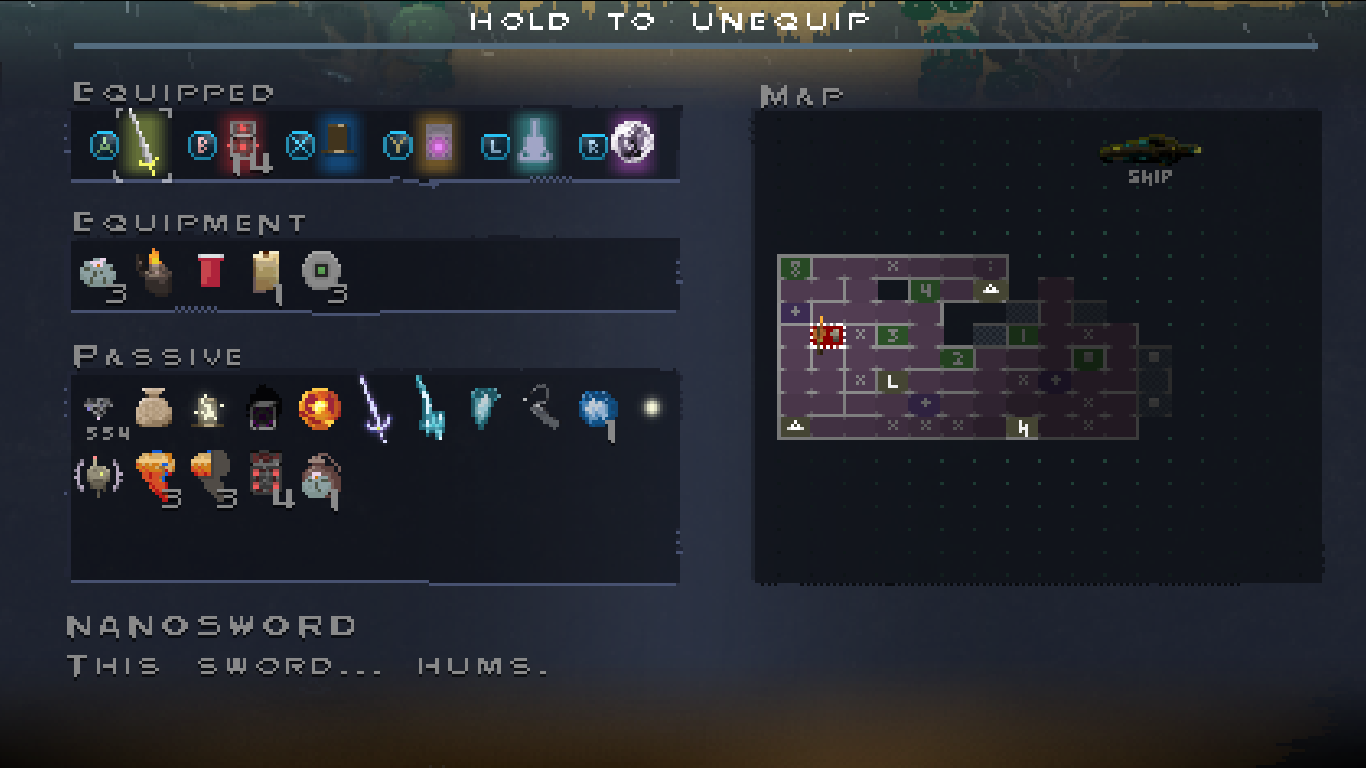
Songbringer gives players plenty of tools to handle combat encounters through the game. One way in which the game does so is in its unique approach to item crafting. As players stockpile items from their respective worlds, these tools are separated into both active and passive types. For example, the top hat (aka boomerang) can be used to damage faraway enemies and pick up hard-to-reach items. A bottle of lightning discovered deep in a dungeon, on the other hand, offers no immediate benefits.
After a certain point in the game, however, players are able to mix and match active and passive weapons to create crazy weapon variations that alter combat in surprising ways. Mix the top hat with lightning? Get a top hat that causes lightning to strike whenever it connects with an enemy. Combine fire with your warp move? Turn into fire when dodging around the battlefield, lighting enemies ablaze. The result is a system that forces player to make tough decisions during a playthrough, ensuring that no one will see each and every possible combination in a single run.
The combat really came into its own for me about 2 or 3 hours into my initial run. My character, who initially felt too weak to compete, soon blossomed into an absolute war-machine of death. Each and every combat encounter was met with flashy elemental strikes, flurries of sword swings, and constant explosions.

As I mentioned before, the actual mechanics here are a little ‘looser’ than your typical Zelda game. The game lacks the twitch-based responsiveness that made games like Hyper Light Drifter and Furi so appealing, despite their high level of difficulty. In fact, it’s a testament to the game’s design that combat feels so good despite its apparent issues.
A Hostile World
And make no mistake, for Songbringer is a difficult game. Oftentimes I’d breeze through a particular dungeon, only to be met with a room filled with dangerous minions that quickly overpowered me. While I can absolutely forgive cases like these due to the game’s roguelike nature, I cannot do the same for the game’s boss fights.
Showcasing a variety of different large-scale monstrosities, many of the boss battles I encountered in Songbringer were high-octane moments that ended dungeons with a nice, percussive bang. Others felt far too frustrating due to their massive amounts of health and poorly telegraphed attacks. Compounded with an already loose sense of player control, these sharp difficulty spikes and unfair combat encounters were unfortunate blemishes on an otherwise strong and engaging gameplay experience.

The final boss of my playthrough felt especially overpowered, despite my character being equipped with the vast majority of my world’s upgrades. It felt cheap, rather than a case of me needing to brush up on my skills. Given the game’s long legs, I can only hope that boss balancing is something that can be tweaked with future patches.
Scenic Landscapes
If there’s one area where Songbringer clearly breaks away from its Zelda roots, it’s in its presentation. The game’s lanky, uneven approach to pixel art evokes the look and feel of games like Superbrothers: Sword & Sworcery EP. Hundreds of particles dot trees and bushes, and enemies hop around the map in aggressive mobs. The world of Songbringer is odd, foreign, and dangerous, and its graphical style does a great way of showcasing this.
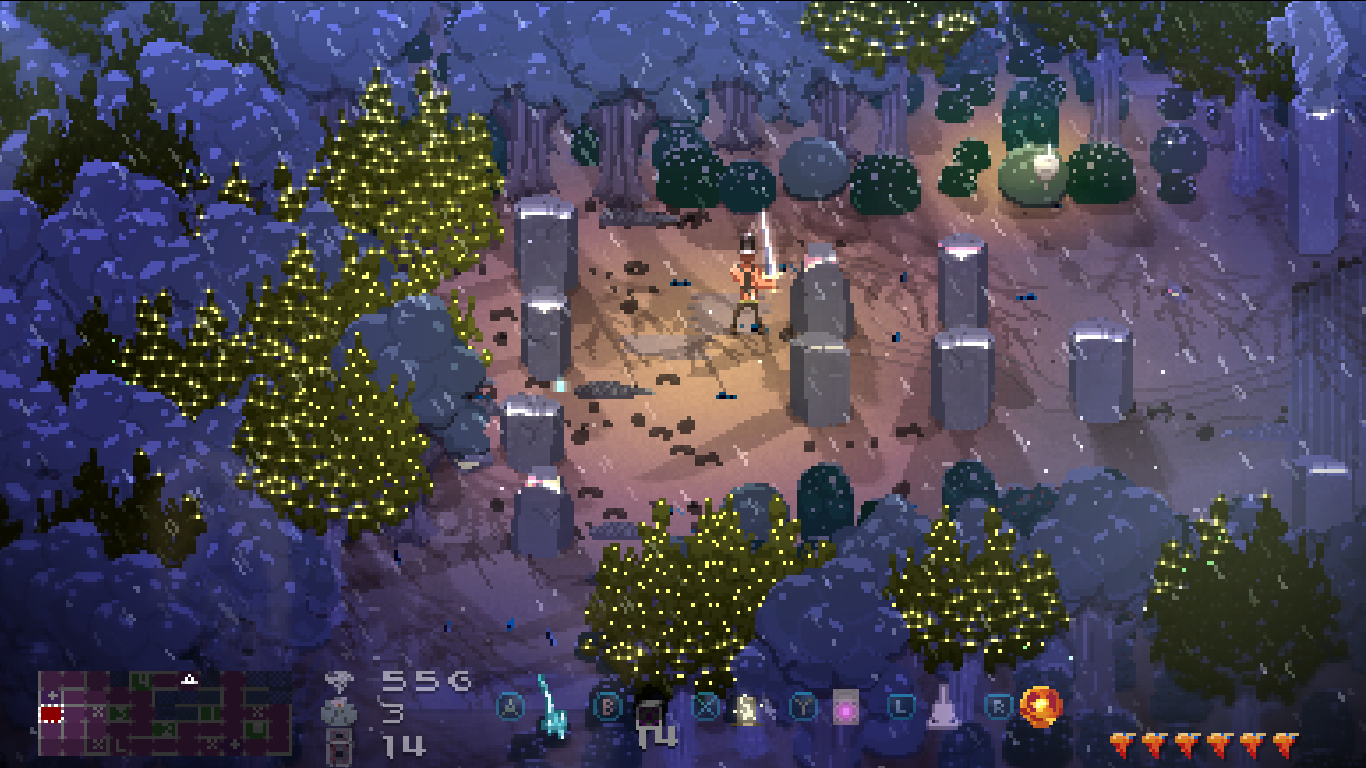
Unfortunately, for all the great work done by Nathanael Weiss on the game’s graphics, occasionally it almost feels like too much is going on at once. While lightning bolts and bomb flashes look magnificent in their sheer scale on-screen, it can be hard to decipher exactly what is happening at any time. While not a knock on the game’s graphics (the game stays locked at a solid frame-rate in even the most hectic of circumstances), it would have been nice to have had more contrast between background and foreground for gameplay purposes.
Despite Songbringer’s minor graphical flaws, its approach to sound design has far fewer problems. Electing for a classic chiptune style, the game’s soundtrack is an eclectic mix of futuristic electronic beats and dark ambient tracks. While unconventional, and a far cry from the whimsical fantasy of Zelda, the sound of Songbringer is entirely unique, and makes the lengthy trek through its game worlds all the more appealing.

Final Thoughts
Songbringer is an exciting new take on the classic Zelda formula. Its roguelike design makes for exciting worlds and dungeons that feel fresh and unique despite being randomly generated. Better yet, its frenetic combat and varied weaponry make these different world seeds all the more fun to explore.
While sharp difficulty spikes and frustrating boss encounters cheapen the fun, Songbringer’s main pull is enticing enough to warrant a playthrough (or several). And at just twenty bucks, it offers far more value than most games in its genre, right out the gate.
It might not be The Legend of Zelda, but it doesn’t need to be. Songbringer is a game that holds its own, and does so with clever design and great heart.
Score: 8.3/10
David is the founder of The Punished Backlog. He has a problem finishing games he starts.
Just beat: Donkey Kong Bananza.
Working on: Hollow Knight: Silksong.
Can't wait for: Metroid Prime 4: Beyond.
Follow David on Twitter at @David_Silbert to keep up to date with all things The Punished Backlog.








